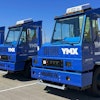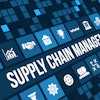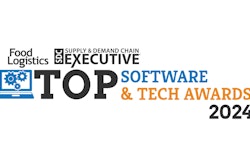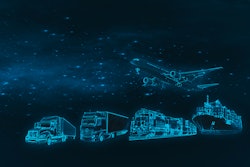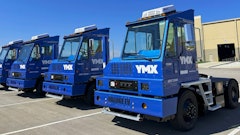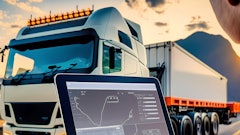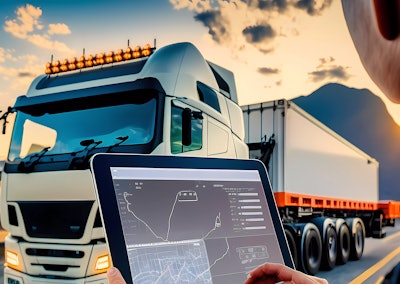
Just looking at this year alone, the freight management industry underwent a significant transformation driven by advanced technologies, which includes everything from artificial intelligence (AI), machine learning (ML) and digital twins to Internet of Things (IoT), software-as-a-service (SaaS) and cloud-based technologies.
And, while monitoring temperature along the way is paramount, it also poses a bevy of challenges. What if the truck shuts down? What if the sensors are off? What if operators can’t track their shipments?
With emerging technologies taking hold across the supply chain industry, the role of transportation management systems (TMS) and other emerging technologies is ever-changing. Designed to increase speed and overall customer satisfaction, these solutions add reliability to an industry that continuously evolves.
“Overall, fleet managers can face many challenges when looking to implement fleet management technology – from finding the right technology for their business need to changing logistics processes to work with the new tech – many factors come into play,” says Sam Thompson, VP, customer success and fleet telematics at Penske Transportation Solutions.
For example, Penske unveiled Catalyst AI, an industry-first AI platform designed to deliver real-time insights into fleet performance. This platform leverages Penske’s patent-pending algorithm and a vast collection of over 57 billion data points to provide recommendations for optimizing fleet operations. This new technology seeks to answer the common, but important question, “how am I doing?” in real time to ensure optimal performance during the cold food chain delivery service.
 Penske Catalyst AIPenske
Penske Catalyst AIPenske
“There are constant and continuous pressures to keep costs down and optimize fleets hauling food. Until the launch of Catalyst AI, there was no true way to easily, answer this question without data-backed insights. Luckily, now food customers can use the platform’s proprietary fleet algorithms to benchmark against similar vehicles operating across the robust Penske network,” adds Thompson.
For its part, ProvisionAi launched LevelLoad, a patented technology that reduces volatility and cuts costs for shippers and carriers. This platform reaches an outlook of 30 days and can make the decision to move items forward or back on any lane based on a variety of factors. LevelLoad also can consider what will be on each truck and how it impacts in-stock customer service. LevelLoad determines which truck or trucks from which location are needed most to minimize the chance of a stockout, taking into account available warehouse space.
“The trend is for shippers to consider ‘partner’ carriers in their longer-term capacity plans in the same ways as they would evaluate adding another shift or increasing warehouse capacity,” says Tom Moore, founder and CEO of ProvisionAi. “The outlook is positive for less ‘boom-bust’ inefficient coupling parties to a smoothed commitment to stability.”
NetLogistik is also making technological leaps in supply chain management. For smaller, less complicated environments, NetLogistik developed TEP (Transportation Efficiency and Productivity), which seamlessly syncs the entire transportation management process, from planning and tracking to freight settlement. TEP provides online visibility of shipping processes and costs, and allows the integration of catalogs of operators, carriers, users, and warehouses. Additionally, the system easily integrates with other software, leading to greater efficiency in logistics management. It also offers a quick ROI and implementation.
“TEP optimizes the efficiency and accuracy of transportation operations with complete visibility into orders, shipments, and deliveries—while building stronger relationships with suppliers, carriers, and customers through reliable, on-time performance,” says Jagan Reddy, managing director of NetLogistik. “Businesses that have utilized Netlogistik’s TEP solution have achieved impressive results, including up to 33% reduction in administration times; up to 5% savings in total transportation costs; and up to 50% improvement in customer service. TEP maximizes order management, shipment planning, transport selection, documentation management, route monitoring, and shipment costs.”
According to Brian Cupp, director of operations at IntelliTrans, its groundbreaking TMS is a SaaS-based TMS that provides shipment execution and visibility across rail, truck, intermodal, barge, and ocean shipments so shippers can access their entire logistic network from a single system.
“Whether a food or beverage manufacturer ships hundreds or thousands of loads a month, IntelliTrans TMS features have been developed with the purpose of making distribution more efficient and cost effective,” says Cupp. “The IntelliTrans TMS integrates with a variety of IoT device companies and brings in valuable information from a wide array of IoT sensors, which extend the value of visibility data and helps identify risks, such as being able to see that a hatch is open, temperature or speed thresholds have been exceeded, brakes are engaged during movement, or that a notable impact has occurred. IoT sensors provide real-time tracking and monitoring of shipments, ensuring optimal conditions such as temperature, humidity, and location.”
Today’s TMS systems are tasked with maintaining a rigid standard in the delivery process to ensure timeliness, quality and safety in the delivery of cold chain products and beyond.
And, they’ve grown into much more than scheduling tools, according to Brendan Wiggins, AVP, customer care, strategic accounts from Geotab. In fact, today’s TMS incorporate a broad range of capabilities such as routing and optimization, maintenance tracking, compliance reporting, load management, and driver communication.
“Creating a single place for a fleet operator to see critical performance measurements allows them to make better decisions, informed by data. Transportation management systems provide a lot of data, and AI enables predictability and decreases time to insight; it’s like having a data scientist in your back pocket,” adds Wiggins.
Additionally, a lot of what’s happening in the industry now is the transition from legacy technologies.
“There's a big replacement cycle that's going on, particularly in areas like delivery route planning. And what happened was there's been technology out for quite a long time. But a lot of it is aging technology,” says Chris Jones, EVP, industry and services with Descartes Systems Group Inc. “Tracking real-time data has become a very big area. And how you use that data to enable not just yourselves in terms of being able to deliver more effectively, but empower customers. I think probably the biggest thing that we see is the ability for us to provide technologies to fleet operators that starts when they're getting orders and goes through how they plan and execute, how they track deliveries, the information they provide customers etc.”
Drivers and transportation professionals used to rely on outdated modes of collecting data to plan their fleet planning and procurement. Not only was this process time consuming, but was also not comprehensive enough to effectively compare data points and enhance optimization. Platforms like Penske’s Catalyst AI effectively gives fleet managers a method of evaluating the strengths and challenges within their fleet in order to stay ahead of trends in the industry.
“AI has the power to greatly impact the efficiency and functionality of a fleet. For one example, a recent industry study found that 77% of transportation professionals tend to rely on historical, annual forecasting and industry benchmark reports to inform their fleet planning and procurement decisions. This process is often manual, time consuming and not holistic enough for fleet managers to accurately compare data for their fleets. Catalyst AI effectively empowers fleet managers to evaluate the true performance of their fleets and, ultimately, optimize their operations to stay ahead of the ever-changing industry,” says Thompson.
“By integrating AI, machine learning and our deep industry expertise, Penske is empowering fleets to evaluate the true performance of their fleets and, ultimately, optimizing their supply chain operations to stay ahead of the ever-changing cold chain industry. For example, a fleet manager can use the platform to compare their fleet’s fuel efficiency over time compared to similar fleets. If their fleet is underperforming, they can drill down into specific metrics that are likely affecting fuel efficiency. Unlike a static industry report that would provide a basic benchmark, Catalyst AI provides actionable insights that are relevant to fleets hauling a variety of goods,” adds Thompson.
When adopting advanced technology and data insights, some things fleets need to consider is employee adoption and change management.
“Many fleets need to retrain everyone—from frontline mechanics and drivers to their leaders—on what AI-driven fleet management can and can't do. It's crucial to manage expectations and create a strong action plan for lasting change. Generative AI in fleet is a new concept and there is a need for clear communication about its role,” says Wiggins.
 Geotab AceGeotab
Geotab AceGeotab
That’s why Geotab developed Geotab Ace, a generative AI assistant that uses best practices for responsible AI to revolutionize data interactions. This AI assistant enables fleet managers to access real-time information through natural language queries, simplifying the data retrieval process. Geotab Ace also provides detailed analytics on various aspects of fleet management, including predictive maintenance, trip data, zone activity, and electric vehicle statistics, while ensuring robust data security and privacy.
“By democratizing access to complex data, this tool supports fleets in making swift, informed decisions, fostering a more efficient and responsive freight management ecosystem,” says Amir Sayegh, AVP, data product discovery, Geotab.
New challenges in the industry
As is common with any new technology, there are bound to be a few challenges in the development of new standards and processes.
“To implement a TMS, the TMS must integrate seamlessly with existing systems like the ERP, WMS, and others,” says Reddy. “Data must be migrated to the TMS, which involves maintaining data integrity and accuracy. Data must be clean and accurate before it is input into the TMS. Policies for data management, security, and access control must be established.”
Changing regulatory requirements also serves as a big challenge for shippers.
“While there are a lot of common issues facing shippers, each shipper’s business is unique,” says Cupp. “Nuanced issues are often the most difficult to solve, and if you work with a ‘big box’ technology provider, they are often unwilling to help solve your unique challenges. IntelliTrans TMS has robust rail fleet management features, partners with rail fleet maintenance specialists, and integrates with truck fleet management systems to position shippers to solve as many of those unique challenges as possible.”
Other challenges revolve around the following:
- Finding the right technology to implement into a particular business.
- Increased training and communication in new systems.
- Developing knowledge and expertise in specific areas and decreasing department turnover.
- Integrating new technology into predetermined, working systems
- Getting executives to value new technology and change as a necessity for growth and persistence in the industry.
However, for some companies in the food logistics space, technology has helped make these challenges a bit easier to overcome.
“I would say it's actually gotten easier and is less challenging than it was before for a couple reasons. One of them is that most of the stuff that's being delivered these days is coming in the cloud. So that means basically people don't have to have big technology staff and they don't have to worry about managing these systems locally,” says Jones. “The other thing is there's just been so much work in areas like user interfaces and the user experience that makes the systems more intuitive. The biggest challenge I think for anybody here is understanding what they're going to do different in their business, like if you just take a new system and implement it with your old practices. You really need to look at what you should be doing different that this technology enables you to do that you couldn't do before.”
Achieving ever-changing rules and regulations
Moving forward, specifically with regards to new FSMA regulations, cold chain companies must take strides to improve management of fleet and freight.
Companies are having to place increased importance on speed and time management, and must make extra efforts to maintain safety compliance and strong product integrity.
“Data is becoming easier to process, store and analyze, and temperature tracking devices are also drastically decreasing in price,” says Wiggins. “It is now possible to not only measure the temperature of the cargo area, but [also] the temperature of each individual shipment or pallet. The frequency of this data is also much higher, and allows for analysis about the most efficient way to transport temperature controlled loads.”
One aspect that helps with compliance is preventive maintenance of assets (rail cars, trucks). IntelliTrans partnered with AllTranstek to improve rail car maintenance tracking. AllTranstek digitizes the maintenance process for rail cars, ensuring the rail fleets get to maintenance shops at the right time to keep up with required regulatory maintenance.
“For the cold chain, regulatory frameworks, such as the Food Safety Modernization Act (FSMA), impose strict requirements on the transportation of food and pharmaceuticals. The TMS automates the documentation process, ensuring that all necessary records are accurately maintained and easily accessible. This automation not only streamlines operations but also reduces the risk of human error, thereby enhancing compliance and mitigating the risk of penalties or product recalls,” says Cupp.
Even so, speed is of the essence.
“Moving food in, particularly perishables, in a way that manages and maintains freshness is core to the whole LevelLoad operation. Good food companies plan -- great food companies execute,” says Moore.
Thanks to emerging technologies, the freight management industry continues to evolve and bring new opportunities for moving freight along the cold chain.


